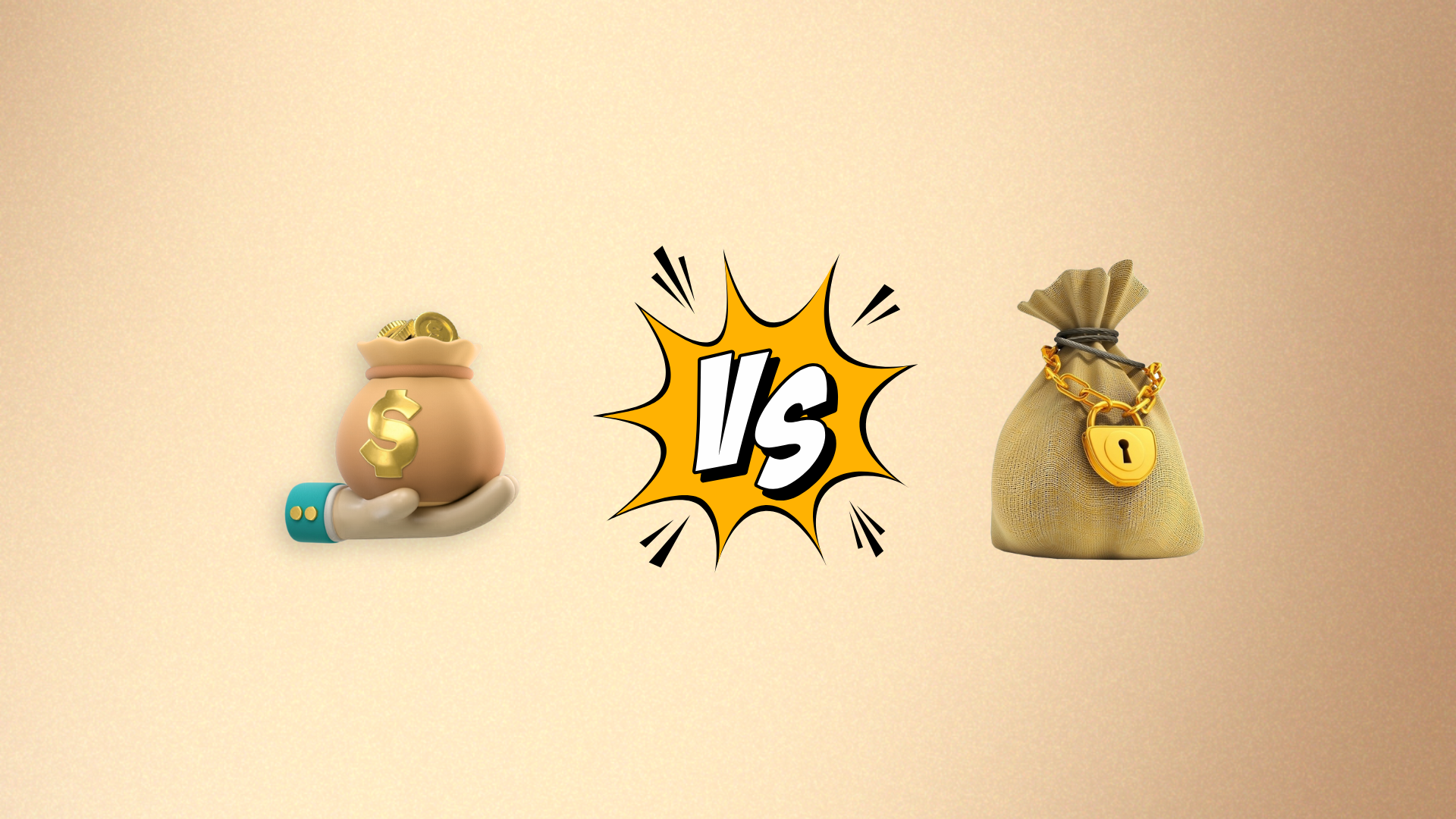If you’re running a company in India, then you might be facing the dilemma of parking your periodic short-term cash business cash. Should you prefer parking your funds in traditional fixed deposits or some mutual fund alternatives like liquid funds?
In today’s KOFFi break, let’s discuss the fluctuating interest rates, understanding your short-term investment options, and pros and cons of liquid funds and fixed deposits to help you make an informed decision for your business.
What Are Liquid Funds?
Liquid funds is a category of debt mutual funds designed specifically for short-term cash management. They invest primarily in highly secure money market instruments and debt securities with extremely short maturities, typically up to 91 days.
These funds put your money to work across various instruments like:
- Treasury Bills (T-bills) issued by the Government of India
- Commercial Papers from top-rated corporations
- Certificates of Deposit from banks
- Call Money Market instruments
- Term deposits with banks
The primary appeal of liquid funds lies in their combination of reasonable returns, high liquidity, and relatively low risk. They’re designed to provide returns that outperform savings accounts while allowing investors to access their money within one business day (T+1).
For businesses, liquid funds serve as an efficient tool to manage temporary cash surpluses without locking funds away for extended periods.
What Are Fixed Deposits?
Fixed deposits (FDs) are the backbone of Indian business owners for decades. They represent time deposits with banks where your money is committed for a predetermined period ranging from 7 days to 10 years.
When you place money in fixed deposits, the bank guarantees a fixed interest rate for the chosen tenure. This rate is determined at the time of opening the deposit and remains constant throughout the period regardless of market fluctuations.
For businesses, corporate FDs offer slightly higher rates than retail FDs but come with similar structures and regulations. The key feature remains the same, predictable returns with virtually no risk to the principal amount.
Company FDs typically require minimum investments starting from ₹1 lakh and offer interest rates currently ranging between 5.5-7.5% depending on the bank and tenure.
Why Corporates Love Liquid Funds
Corporate treasurers across India have been steadily shifting portions of their short-term funds from traditional bank fixed deposits to liquid funds. Here’s why this trend continues to gain momentum:
Better Utilization of Idle Cash
Imagine a tech company with a monthly payroll of ₹2 crores, which is scheduled on the 5th of every month. Like most companies, it keeps this amount ready at least 30 days in advance for safety and approval cycles.
That means ₹2 crores sit idle in a bank account for almost a month.
With Fixed Deposits:
- Parking ₹2 crores in a 30-day FD at 5.5% p.a. earns around ₹91,000
- Early withdrawal penalties would apply if cash is suddenly needed
- Interest earnings are fully taxable at the corporate tax rate
With Liquid Funds:
- Parking the same ₹2 crores in a liquid fund at 7.5% p.a. for 30 days earns about ₹1,23,000
- No penalties for withdrawal, accessible next business day
- More favorable tax treatment through indexation benefits if held longer
Flexibility for Cash Flow Management
Apart from returns in high to medium returns in liquid funds, it also allows high flexibility without any penalty.
For example: If your company parks ₹3-5 lakhs in liquid funds but under some unavoidable circumstances, you wish to withdraw the cash. No worries, you can do it anytime without any penalty.
Simplified Accounting
Unlike FDs where interest accrues throughout the year creating multiple accounting entries, liquid funds growth is reflected in the NAV and recognized only when units are sold. This gives financial controllers better flexibility in managing when they book gains.
Tax Gain Deferral
In FDs, interest is taxed every year — even if you don’t withdraw. This adds to your annual taxable income.
In liquid funds (growth option), you pay tax only when you redeem the units.
This allows businesses to defer tax, which helps in managing yearly profit/loss reporting and cash flow planning more efficiently.
Key Differences: Liquid Funds vs Fixed Deposits
Understanding the fundamental differences between these instruments helps make strategic decisions about where to park your business capital:
Feature | Liquid Funds | Fixed Deposits |
Returns | 6 to 7% p.a. | 5.5 to 6.5% p.a. |
Access to Money | T+1 (next working day) | Locked for fixed tenure; premature withdrawal with penalty |
Risk Level | Low (market-linked) | Very low (guaranteed returns) |
Minimum Investment | Typically ₹5,000 | ₹1 lakh for corporate FDs |
Tax Efficiency | Gains taxed at 20% with indexation after 3 years | Interest fully taxable at corporate tax rate |
Inflation Protection | Somewhat better | Limited |
Interest Rate Risk | Low | None (Locked-in rate) |
Pros & Cons
Liquid Funds
Here are some pros and cons of liquid funds:
Pros:
- Higher potential returns than savings accounts
- No lock-in period or withdrawal penalties
- Better tax efficiency, especially for higher tax brackets
- Daily interest calculation and accrual
- Some offer instant redemption facility up to ₹50,000
- Portfolio diversification across multiple issuers
Cons:
- Not completely risk-free (though risks are minimal)
- Returns aren’t guaranteed and fluctuate with market conditions
- Slightly delayed access compared to savings accounts
- Expense ratio reduces actual returns (though minimal)
- Credit risk exists, though mitigated through high-quality papers
Fixed Deposits
Here are some pros and cons of fixed deposits:
Pros:
- Guaranteed returns regardless of market conditions
- Complete capital protection (with deposit insurance up to ₹5 lakhs)
- Easy to understand and plan for
- Can be used as collateral for loans
- Special rates often available for senior citizens
- No expense ratio to erode returns
Cons:
- Often lower returns than liquid funds in most interest rate environments
- Penalties for premature withdrawals
- Inflexible tenure once committed
- Interest fully taxable at applicable income tax rate
- No protection against inflation if rates are lower than inflation
- Requires separate deposits for different tenor requirements
Which is Better for Your Business?
The right choice between liquid funds and fixed deposits depends greatly on your business’s unique needs. Here are scenarios where each option shines:
Choose Liquid Funds When:
- You need flexibility to withdraw without penalties
- Your cash requirements are somewhat unpredictable
- You’re in a high tax bracket and would benefit from better tax efficiency
- You need to park funds for very short durations (7-90 days)
- You have a significant amount of operational capital that’s temporarily idle
- You want to potentially earn slightly higher returns than traditional FDs
Choose Fixed Deposits When:
- You have a clearly defined time horizon for your investment
- Capital preservation is your absolute priority
- You prefer knowing the exact returns upfront for budgeting purposes
- You operate in lower tax brackets where tax advantages of liquid funds are minimal
- You want to use the deposits as collateral for business loans
- The current FD rates are particularly attractive compared to liquid fund yields
Common Myths about Liquid Funds
Myth 1: Liquid funds are as risky as equity funds
Reality: Liquid funds invest in extremely short-duration debt instruments with high credit ratings—primarily in government treasury bills and bank certificates of deposit (CDs). This makes them one of the lowest-risk categories within mutual funds. Their volatility is minimal compared to equity funds.
Myth 2: Fixed deposits always provide better security
Reality: While FDs offer guaranteed returns, only up to ₹5 lakh per depositor per bank is insured under DICGC. In contrast, liquid funds from reputable AMCs invest in government securities and AAA-rated papers, carrying minimal risk and potentially offering better post-tax returns.
Myth 3: Accessing money from liquid funds is complicated
Reality: Most fund houses now offer digital platforms where redemption is as simple as a few clicks, with money typically reaching your bank account the next working day. Some even offer instant redemption facilities.
Myth 4: Small businesses don’t benefit from liquid funds
Reality: Even businesses with modest surplus cash (₹5-10 lakhs) can benefit from the higher returns and flexibility of liquid funds compared to traditional savings accounts.
Tips to Get Started with Liquid Funds
If you’re considering liquid funds for your business, here’s how to approach them strategically:
1. Analyze Your Cash Flow Pattern
Review your company’s cash flow statements from the past 12-24 months to identify:
- Average surplus cash amounts
- Duration patterns of excess liquidity
- Seasonal variations in cash requirements
This analysis helps determine how much can be safely deployed in liquid funds versus what needs to remain in current accounts for immediate access.
2. Choose the Right Fund
When selecting a liquid fund, prioritize:
- Fund Size: Larger funds (₹5,000+ crores) typically provide more stability
- Portfolio Quality: Look for funds maintaining at least 85-90% in AAA-rated or equivalent instruments
- Fund House Reputation: Established AMCs with strong risk management practices
- Expense Ratio: Compare and select funds with lower expense ratios, ideally under 0.20%
- Performance Consistency: Check historical returns across different interest rate cycles
3. Set Up Systematic Transfer Plans
Consider establishing a system where excess cash automatically moves from your current account to liquid funds and back when needed. Many fund houses offer corporate sweep facilities that integrate with your banking operations.
4. Monitor Regularly But Not Obsessively
Unlike equity investments that require frequent monitoring, liquid funds need only quarterly reviews to ensure:
- The fund’s credit quality remains high
- Expense ratios haven’t increased significantly
- Performance remains competitive with peer funds
5. Maintain a Balanced Approach
Even with liquid funds’ advantages, maintain a balanced approach:
- Keep 1-2 weeks of operational expenses in your current account
- Use liquid funds for 1-3 month requirements
- Consider ultra-short term funds for 3-6 month horizons
- Use FDs for amounts with clearly defined longer time horizons
Final Thought
The ideal strategy for most businesses isn’t choosing exclusively between liquid funds and fixed deposits, but rather creating a thoughtful combination based on your specific cash flow patterns, risk tolerance, and operational needs.
By understanding the difference between both the instruments and deploying them strategically, your business can potentially grow returns on idle cash.
Was this helpful?
Click on a star to rate it!
As you found this post useful...
Follow us on social media!
We are sorry that this post was not useful for you!
Let us improve this post!
Tell us how we can improve this post?






 Ask us Anything!
Ask us Anything!